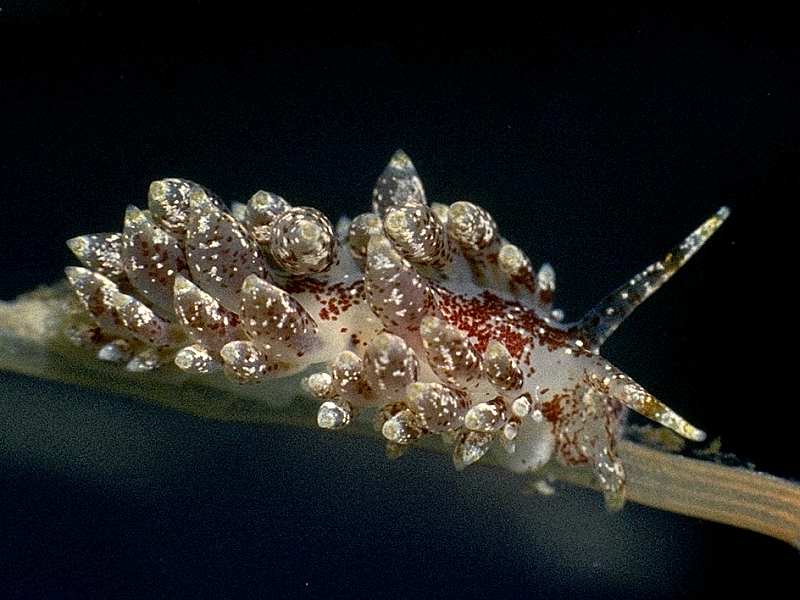| MOLLUSCA : Nudibranchia : Eubranchidae | SNAILS, SLUGS, ETC. |
Amphorina pallida (Alder & Hancock, 1842)
 |
| Amphorina pallida |
Description: The body and ceratal surfaces are pigmented with white and brown-red patches and there are yellow bands towards the tips of the cerata. The rhinophores and oral tentacles have a band of brown pigment and white pigment spots becoming dense at the tips. Alder & Hancock had a very pale individual as their type specimen, hence the somewhat inappropriate specific name; they later wanted to change the name to picta (painted)! Adults may reach 23mm in length.
Habitat: The adults may feed on the hydroid Tubularia, however juveniles usually take smaller calyptoblastic hydroids such as Obelia dichotoma, which often grows on Tubularia, and Halecium species.
Distribution: It is distributed all round the British Isles, America, Iceland and From Norway to the Mediterranean.
Key Identification Features:
- Swollen cerata with yellow or white bands of pigment at the tip.
- Brown and yellow-white pigment spots on body and cerata.
Distribution Map from NBN: Amphorina pallida at National Biodiversity Network mapping facility, data for UK.
iNaturalist: Amphorina pallida at iNaturalist World Species Observations database.
GBIF data for Eubranchus pallidus
WoRMS: Amphorina pallida at World Register of Marine Species. Accepted name: Eubranchus pallidus (Alder & Hancock, 1842). AphiaID: 139768.
Classification: Biota; Animalia; Mollusca; Gastropoda; Heterobranchia; Euthyneura; Ringipleura; Nudipleura; Nudibranchia; Cladobranchia; Fionoidea; Eubranchidae; Amphorina
| Previous species | Next species |
| Picton, B.E. & Morrow, C.C. (2024). Amphorina pallida. (Alder & Hancock, 1842). [In] Encyclopedia of Marine Life of Britain and Ireland. https://www2.habitas.org.uk/marbiop-ni/speciesaccounts.php?item=W15140. Accessed on 2025-04-10 |